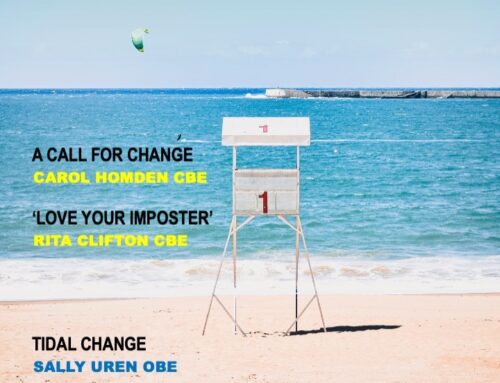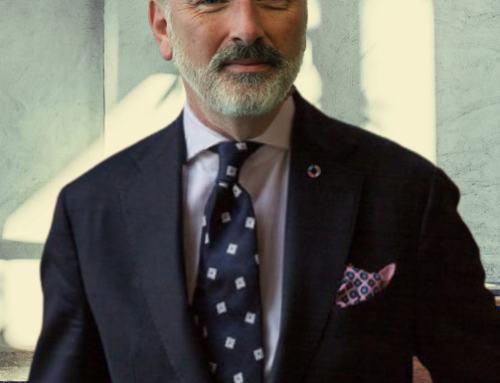Meritocracy The Myth

I have worked with hundreds of organisations over the last two decades. I’ve belonged to some of them, advised some of them and watched others from afar.
One of the biggest changes I’ve seen has been an increased awareness of inclusion. It has been called various things over the years: equal opportunities, equality, diversity, inclusion, talent management. The language evolves, and will continue to evolve, but it seems to finally be a universally acknowledged truth that discrimination isn’t good for individuals or organisations.
For me, 1997 was a key turning point.
In 1997 the Macpherson report was commissioned. This report, which followed the racially motivated murder of Stephen Lawrence, found that the investigation into his killing had been “marred by a combination of professional incompetence, institutional racism and a failure of leadership”.
Before this report, organisations would talk a lot about discrimination and try to respond to incidents when they occurred. Trouble is, they didn’t always know it was happening: sometimes discrimination was passed off as ‘a bit of a joke’, sometimes staff didn’t feel able to report incidents, and often there was a sense that nothing much got done even if they did report incidents. For some communities, such as LGBT people, discrimination was sanctioned by law. It only became unlawful to discriminate against lesbian, gay and bi people in 2004.
But after the report was published in 1999, laws started to change and, very simply, public bodies were required to not only respond to discrimination but take active steps to prevent it. They also had a duty to promote good relations between communities; build bridges not walls. In 2010, this positive duty was extended to all minority groups.
Nearly a decade on, it is clear that the vast majority of organisations now actively think about inclusion. In fact, most organisations would be disgusted to think that there was negative discrimination in their workplaces or in the services they deliver. But one only needs to look at the rulings from employment tribunals to know that racism, sexism, homophobia and other forms of prejudice continue to exist in the workplace.
I often hear from leaders that meritocracy rules in their organisation. “I don’t care if they are blue, pink, black, white…as long as they are the best person for the job, they’re welcome here.” While this might be true, the major problem with this refrain is that it is often a response to (sometimes unconscious) organisational, systemic, individual and cultural prejudice. Importantly, it ignores the different opportunities and barriers that an individual has faced to get to sit in front of you at interview. And it means companies are missing out on a massively diverse, talented workforce.
I had an excellent up-bringing. I had a desk from the age of three and all the stories I could read. Homework was done with rigour and attention. I was told I was bright and capable and I could be anything I wanted to be. I did well in exams and took my three As to university. I might have been the first in my family to go to Oxford but had their full support. When I was 13, I realised I was gay and not only gay but a tomboy. I ruled myself out of so many careers because I thought they wouldn’t want someone like me. But I still had all the advantages of being white, Oxford educated, and articulate.
Compare my experience to a young man, let’s call him Jack, who grows up in a two-bedroom flat with two younger siblings. His mum has three different jobs so her children are fed, clean and ready for school. Jack does his homework on the kitchen table, amongst siblings with different needs and demands. When he goes shopping, he is followed around stores by security guards. He has been stopped and searched over 20 times. Rather than leave school at 16, he decides to sit A-levels and he scrapes three Cs. He is anxious about moving away from home, so goes to a local university where he works hard at his studies and does night shifts to pay his way.
Me and Jack go head-to-head in an interview. Jack was reluctant to apply because he knows there are so few people of colour in the organisation. The interview panel is all white. The monitoring form he completed when he applied didn’t ask about ethnicity. But Jack goes for it anyway. Which one of us gets the job? I know that the manager who takes a ‘colour-blind’ approach, who only wants ‘the best person for the job’, will struggle to see Jack’s potential.
This is why meritocracy is flawed. It fails to see how things exist to help some people compete, and others to fail. Jack would be a great employee; he works hard, he knows how to juggle multiple responsibilities, he has strong values and ethics. But he is consistently over-looked.
So what’s the answer? The answer is to think differently about inclusion – or equality, or diversity, or whatever you want to call it. The answer is to change our way of thinking. Meritocracy is a fallacy, and we should be instead focusing on dismantling the barriers that get in the way for Jack and others. We need to level the playing field for all staff. Introduce specific leadership programmes for under-represented groups. Look at how you interview, how you recruit. Support network groups to help you see things differently. Change your staff and empower them to change your business.
Then you will be truly inclusive and will thrive because of it.
Baroness Ruth Hunt
Deeds And Words
https://www.deedsandwords.co.uk/

Meritocracy The Myth

I have worked with hundreds of organisations over the last two decades. I’ve belonged to some of them, advised some of them and watched others from afar.
One of the biggest changes I’ve seen has been an increased awareness of inclusion. It has been called various things over the years: equal opportunities, equality, diversity, inclusion, talent management. The language evolves, and will continue to evolve, but it seems to finally be a universally acknowledged truth that discrimination isn’t good for individuals or organisations.
For me, 1997 was a key turning point.
In 1997 the Macpherson report was commissioned. This report, which followed the racially motivated murder of Stephen Lawrence, found that the investigation into his killing had been “marred by a combination of professional incompetence, institutional racism and a failure of leadership”.
Before this report, organisations would talk a lot about discrimination and try to respond to incidents when they occurred. Trouble is, they didn’t always know it was happening: sometimes discrimination was passed off as ‘a bit of a joke’, sometimes staff didn’t feel able to report incidents, and often there was a sense that nothing much got done even if they did report incidents. For some communities, such as LGBT people, discrimination was sanctioned by law. It only became unlawful to discriminate against lesbian, gay and bi people in 2004.
But after the report was published in 1999, laws started to change and, very simply, public bodies were required to not only respond to discrimination but take active steps to prevent it. They also had a duty to promote good relations between communities; build bridges not walls. In 2010, this positive duty was extended to all minority groups.
Nearly a decade on, it is clear that the vast majority of organisations now actively think about inclusion. In fact, most organisations would be disgusted to think that there was negative discrimination in their workplaces or in the services they deliver. But one only needs to look at the rulings from employment tribunals to know that racism, sexism, homophobia and other forms of prejudice continue to exist in the workplace.
I often hear from leaders that meritocracy rules in their organisation. “I don’t care if they are blue, pink, black, white…as long as they are the best person for the job, they’re welcome here.” While this might be true, the major problem with this refrain is that it is often a response to (sometimes unconscious) organisational, systemic, individual and cultural prejudice. Importantly, it ignores the different opportunities and barriers that an individual has faced to get to sit in front of you at interview. And it means companies are missing out on a massively diverse, talented workforce.
I had an excellent up-bringing. I had a desk from the age of three and all the stories I could read. Homework was done with rigour and attention. I was told I was bright and capable and I could be anything I wanted to be. I did well in exams and took my three As to university. I might have been the first in my family to go to Oxford but had their full support. When I was 13, I realised I was gay and not only gay but a tomboy. I ruled myself out of so many careers because I thought they wouldn’t want someone like me. But I still had all the advantages of being white, Oxford educated, and articulate.
Compare my experience to a young man, let’s call him Jack, who grows up in a two-bedroom flat with two younger siblings. His mum has three different jobs so her children are fed, clean and ready for school. Jack does his homework on the kitchen table, amongst siblings with different needs and demands. When he goes shopping, he is followed around stores by security guards. He has been stopped and searched over 20 times. Rather than leave school at 16, he decides to sit A-levels and he scrapes three Cs. He is anxious about moving away from home, so goes to a local university where he works hard at his studies and does night shifts to pay his way.
Me and Jack go head-to-head in an interview. Jack was reluctant to apply because he knows there are so few people of colour in the organisation. The interview panel is all white. The monitoring form he completed when he applied didn’t ask about ethnicity. But Jack goes for it anyway. Which one of us gets the job? I know that the manager who takes a ‘colour-blind’ approach, who only wants ‘the best person for the job’, will struggle to see Jack’s potential.
This is why meritocracy is flawed. It fails to see how things exist to help some people compete, and others to fail. Jack would be a great employee; he works hard, he knows how to juggle multiple responsibilities, he has strong values and ethics. But he is consistently over-looked.
So what’s the answer? The answer is to think differently about inclusion – or equality, or diversity, or whatever you want to call it. The answer is to change our way of thinking. Meritocracy is a fallacy, and we should be instead focusing on dismantling the barriers that get in the way for Jack and others. We need to level the playing field for all staff. Introduce specific leadership programmes for under-represented groups. Look at how you interview, how you recruit. Support network groups to help you see things differently. Change your staff and empower them to change your business.
Then you will be truly inclusive and will thrive because of it.
Baroness Ruth Hunt
Deeds And Words
https://www.deedsandwords.co.uk/




